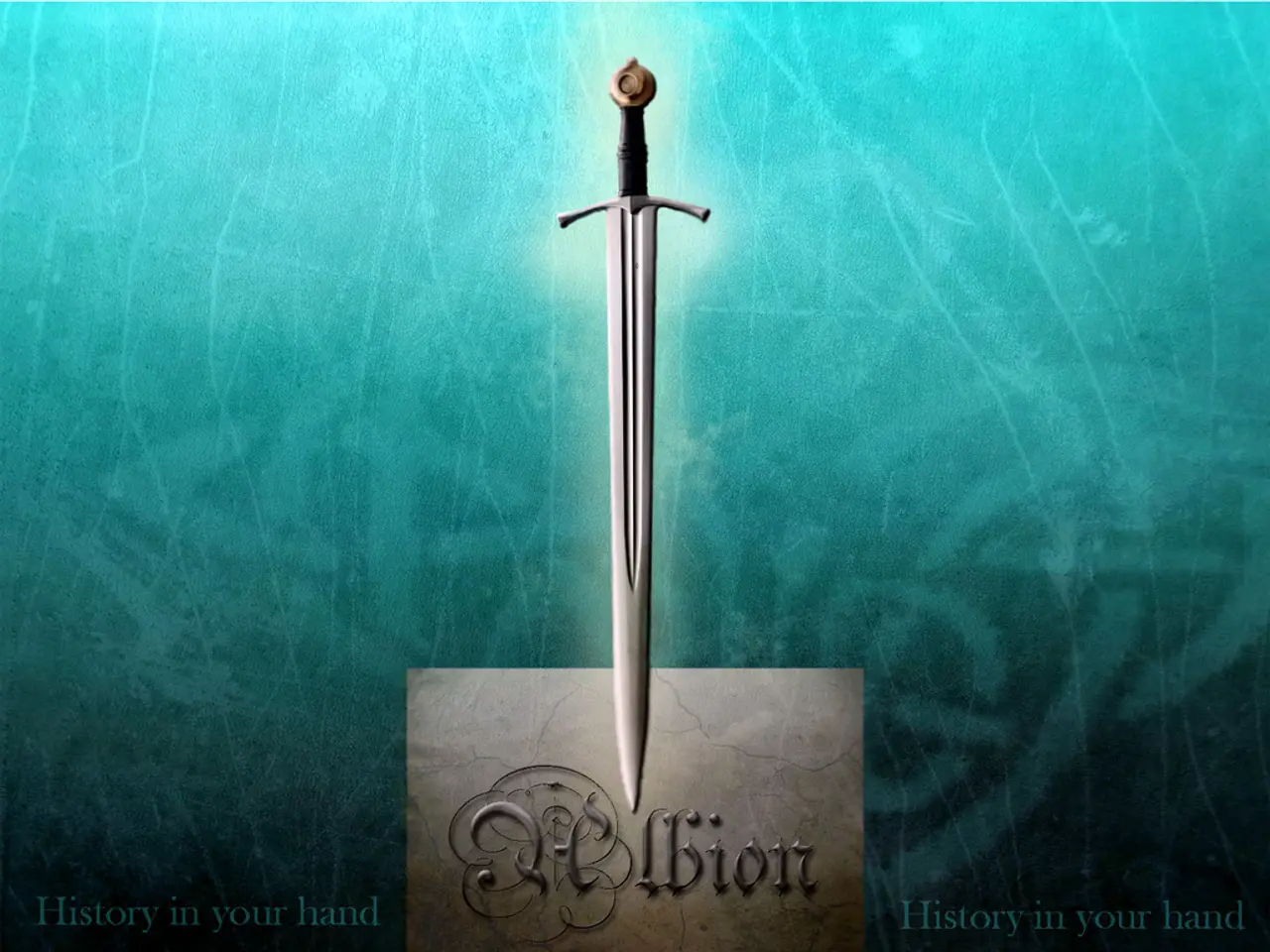1,400-year-old battle burial site unearthed in Ingelheim, featuring swords and axes
=====================================================================
In the heart of Ingelheim, a town steeped in history, a groundbreaking discovery was made in 2023. Archaeologists, led by Holger Grewe from the Research Center Kaiserpfalz, unearthed a remarkable find - the untouched grave of a Frankish warrior, now known as Grave 447[1][2].
This discovery offers a unique glimpse into the Merovingian period, providing insights into the social status and material culture of Frankish warriors in the 7th century[1][2]. The grave, located in a local graveyard, held a wealth of artifacts, including a sword, a broad axe, a lance, and a knife[1][2].
The findings have been showcased in an exhibition titled "Grave 447 - A Frankish Warrior and His Secret Treasure" at the Kultur- und Kongresshalle Ingelheim. The exhibition, under the patronage of a local government official, presents the artifacts in a multimedia format, allowing both scholars and the public to delve into the craftsmanship, martial culture, and burial rites of the Merovingian Frankish elite[1][2].
The exhibition also provides deep insights into life in the 7th century, offering a broader understanding of regional historical developments during the early medieval period in Rheinhessen and the Rhine region[1][2]. The weapons and jewelry found in the grave provide scientists with valuable information about Merovingian funerary practices, the role of warrior elites, and the social hierarchy of the time[1][2].
The grave's discovery sheds light on the military significance of Frankish noble warriors in 7th-century Ingelheim, further contextualizing the regional historical importance of the town during the Merovingian era[1][2]. The exhibition, running until August 24, 2023, brings these fascinating findings to a broader audience, enhancing our understanding of this significant period in history.
The reconstruction of the Frankish warrior was carried out by a specialist from the State Criminal Office, and the reconstructed warrior is presented as a hologram in the exhibition[1]. This modern approach to displaying historical artifacts adds an engaging element to the exhibition, making history come alive for visitors.
References:
[1] Archaeology in Germany. (2023). Frankish Warrior's Grave Discovered in Ingelheim. Retrieved from https://archaeologyingermany.de/2023/05/frankish-warrior-grave-discovered-ingelheim/
[2] The Local. (2023). Frankish Warrior's Grave Discovery Offers New Perspective on Ingelheim's History. Retrieved from https://www.thelocal.de/20230523/frankish-warrior-grave-discovery-offers-new-perspective-on-ingelheim-history
War-and-conflicts and politics were not the focus of the exhibition "Grave 447 - A Frankish Warrior and His Secret Treasure," as it delved into the social status and material culture of Frankish warriors in the 7th century, providing insights into regional historical developments during the early medieval period in Rheinhessen and the Rhine region. The grants for the exhibition likely came from the local government due to its general-news significance, offering a broader understanding of life in the 7th century and the Merovingian period.





